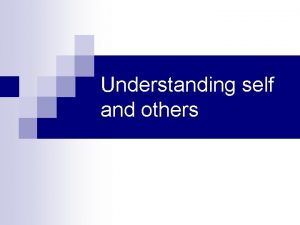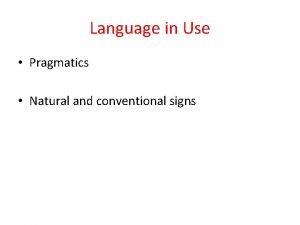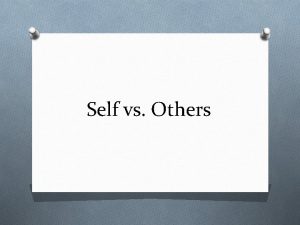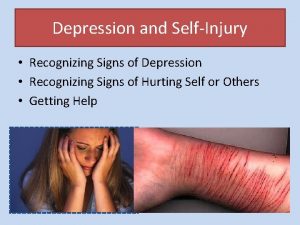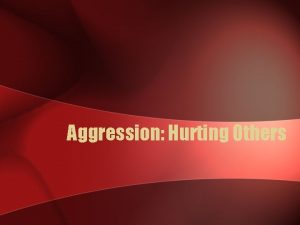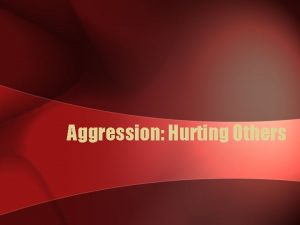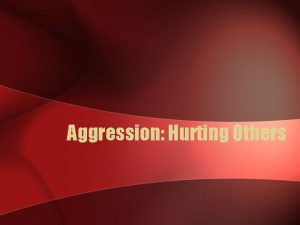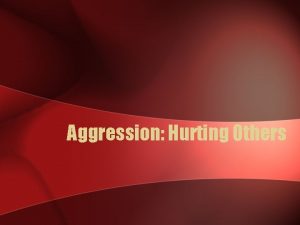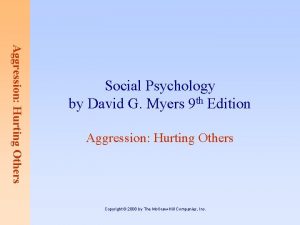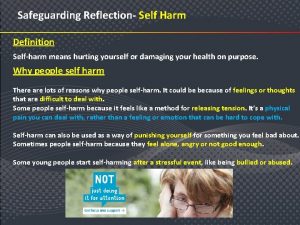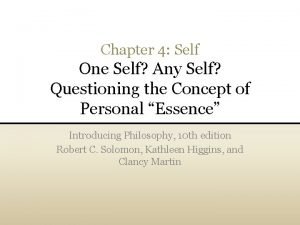Recognizing Signs of Hurting Self or Others What

















- Slides: 17

Recognizing Signs of Hurting Self or Others

What Do You Think? • How is a two-year-old (who falls in the middle of a pool and is drowning) like a teenager who is depressed or suicidal? – Both need someone to help them or they will die. – Both do not have the skills they need to help themselves. – As the child goes deeper into the water, so does the teenager get deeper into their depression. – Both can be prevented. – Both need professional help. Source: Deb Tackman, Outrageous Teaching Techniques in Health Education

2011 NC Youth Risk Behavior Survey § Suicide is the third leading cause of death for teens § Of students in grades 6 -8: § § 24% of students who felt so sad or hopeless almost every day for two weeks or more in a row that they stopped doing some usual activities during the past 12 months. 20. 8 % seriously considered attempting suicide in the past year 13. 1 % made a plan about how they would attempt suicide during the past 12 months 9. 5 % reported attempting suicide § Same risk and protective factors for suicide and other problem behaviors such as drugs, violence, risky sexual behavior

2011 NC Youth Risk Behavior Survey § Suicide is the third leading cause of death for teens § Of students in grades 9 -12: § § 28. 3% of students who felt so sad or hopeless almost every day for two weeks or more in a row that they stopped doing some usual activities during the past 12 months. 14. 3% seriously considered attempting suicide in the past year 13. 5% made a plan about how they would attempt suicide during the past 12 months 5. 0% reported attempting suicide § Same risk and protective factors for suicide and other problem behaviors such as drugs, violence, risky sexual behavior

• Depression is more than the “blues” or the “blahs. ” It is more than the normal everyday ups and downs. • Clinical depression is a medical condition. It is when feelings of sadness, hopelessness, and despair persist and interfere with a person’s ability to function. • Many adults and teenagers do not recognize the symptoms of depression in themselves or others.

• Depression affects people of all ages. • It will affect more than 19 million people every year. • Some people experience only one episode of depression in their entire life, but others may have several episodes of depression. • Depression can begin suddenly for no apparent reason, while others can be associated with a life situation.

• Insomnia • Change in eating patterns, either overeating or not eating • Daytime sleepiness • Aggressive or destructive behavior • Risk-taking behavior • Difficulty concentrating • Loss of interest in activities one used to enjoy • Decline in school performance, skipping class, dropping out of activities • Withdrawal from relationships with friends and family

• Isolation • Fatigue or lack of energy • Feelings of worthlessness, hopelessness, excessive guilt feelings • Trouble concentrating • Beginning to use alcohol or drugs • Changes in personality or behavior • Frequent thoughts of death • Death themes in artwork or written work • Apathy

• Statements such as “I wish I were dead” or “No one cares” • Planning a suicide attempt or a previous attempt • Giving away prized possessions • A sudden lift in spirits because he or she feels the problem will soon end

Self – Hurting Behaviors • Self-injury is the act of • Self-injury often occurs deliberately destroying in secret – person hides body tissue, at times to the self-injury from change a way of feeling. others. • It is an intentional act, repetitive, and results in minor to moderate harm without the intent to cause death.

Self - Hurting Behaviors • • Cutting Burning Pin-Sticking Carving Scratching Branding Marking Head-banging • Picking and pulling skin and hair • Abrasions (scrapes of bruises • Biting • Hitting • Breaking bones • Tattooing • Excessive body piercing

Why Do They Hurt Themselves? § To escape from emotional pain, such as anger or anxiety § To release tension § To physically express pain § To express feelings of emptiness, loneliness, helplessness § An attempt to feel/be more in control § To protect themselves from pain § Not understood by others • To induce a pleasure state from the endorphins that are released

• Frequent or unexplained scars, cuts, bruises, and burns (often on the arms, thighs, abdomen) • Consistent, inappropriate use of clothing to cover scars • General signs of depression • Secretive behavior, spending unusual amounts of time in the bathroom or other isolated areas • Social or emotional isolation and disconnectedness • Substance abuse

• Possession of sharp instruments, (razor blades, thumb tacks, pins) • Indications of extreme anger, sadness, or pain • Images of physical harm in class or creative work • Extreme risk-taking behaviors that could result in injuries

Depression / Self-Hurting Scenarios • Read your scenario. Circle or underline the symptoms of depression is this situation.

Getting Help

Giving Help • Let him or her know that you care and want to help. • Acknowledge that your friend has a problem and that the symptoms are serious. Ask about suicide. • Convince your friend to ask for help. This may include your talking to a trusted adult.
 All traffic signs and meanings
All traffic signs and meanings Islamic quotes on kinship
Islamic quotes on kinship Flirting or hurting
Flirting or hurting Where has everyone gone, leaving janie alone?
Where has everyone gone, leaving janie alone? What is janie and joe's first impression of the town
What is janie and joe's first impression of the town What is actual self
What is actual self Managing self and others
Managing self and others Understanding the self and others
Understanding the self and others Conventional sign example
Conventional sign example Triangular signs are used exclusively for _____ signs.
Triangular signs are used exclusively for _____ signs. The diamond shape is used exclusively for _____ signs
The diamond shape is used exclusively for _____ signs Chapter 3 recognizing opportunity
Chapter 3 recognizing opportunity Identify useful and harmful materials
Identify useful and harmful materials Design channel
Design channel Chapter 3 recognizing opportunity
Chapter 3 recognizing opportunity Example of channel design
Example of channel design Decentralized network
Decentralized network Recognizing and resolving abo discrepancies
Recognizing and resolving abo discrepancies







